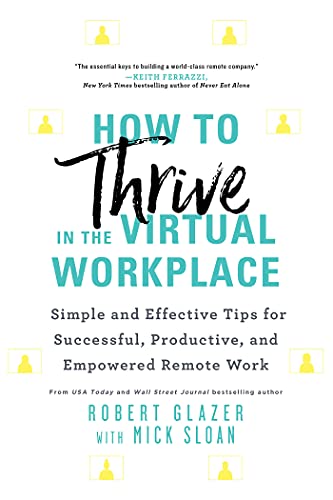Most of us can still remember counting down the final days of school and eagerly anticipating the freedom of summer vacation. Miranda Barrett is years removed from school, but she still gets that feeling every summer—when there isn’t a global pandemic, that is.
Barrett has been a fully remote worker since 2017, first as a consultant and most recently as vice president of member success at the U.S.-based member association, the Community Company. Her story is perhaps the best-case scenario for designing a life around remote work.
“When you have kids and they’re in school, it’s not like you’re bouncing around the world,” Barrett, a mother of two boys, said. “The summers, however, are magical. I am able to build out a whole fun summer for us, and as long as I can work out camps and childcare, I’m able to work with consistency and availability.”
In summer 2019, Barrett and her family traveled for seven weeks, visiting places like North Carolina, Vermont, and California. In a previous summer, she took her older son on an extended trip to California and Hawaii. These trips did not require vacation or time off from work. She worked during normal work hours, including leading a department of thirty-five employees, while at the same time creating lifelong memories with her kids outside her work hours.
Though the pandemic canceled Barrett’s travel plans for summer 2020, her family still made a big move. Rather than social distancing in their Arlington home—a “shoebox” in Barrett’s words—the family moved to a relative’s farmhouse in rural Virginia, where they began raising goats, chickens, and foster dogs.
The future of remote work
While many experiencing remote work realities for the first time in 2020 did not have the chance to recreate Barrett’s experience, her story illustrates the possibilities that remote work holds beyond the pandemic.
In considering the future of remote work, it is worth noting that COVID-19 has forced virtual employees to work under conditions and constraints that would be abnormal or even inappropriate in usual circumstances. If you are working remotely for the first time under these pandemic conditions, it’s important to consider that future remote work opportunities you may have will be different and much easier.
Employees who continue working remotely after the rest of their lifestyle returns to normal will likely find virtual work to be easier and more fulfilling under less extreme conditions. These are some crucial differences that remote work will hold after the pandemic finally passes.
First, as emphasized earlier, working parents won’t have their kids homeschooling in the background and will be expected to arrange childcare during the workday once it is safe to do so.
Employees will be increasingly expected to have a more formal office setup—a specific part of their home designated for work, better lighting, appropriate technology, a clean background, and other professional touches. While creating these will require some logistical coordination, it’ll also make remote work feel more comfortable and normal.
You’ll feel like you’re working from home, not living at work. Remote work will feel less isolating when employees can use their flexibility to go to a class at the gym during the day, grocery shop on their lunch break, or see friends for coffee or an after-work happy hour. As Barrett’s experiences show, it’s even common for remote employees to travel, using their flexibility to work from a different or new location that they can explore during their free time. These types of arrangements must be carefully planned and agreed upon with managers, but they’d be simply impossible for office-only workers.
On a higher level, remote work offers an opportunity for people to expand their lifestyle options and have a real choice on where and how they want to live. While many people around the world live in cities because they truly want to, many do so because they need to be close to the best opportunities in their industry.
For decades, employees have needed to endure increasingly longer commutes in order to obtain a balance of the career they wanted and the space they needed personally at a price they could afford. In a world where remote work is available at many organizations, people can truly choose where they want to live. People who want to live in the suburbs to raise a family can seek out a remote organization, allowing them to design the personal lifestyle they want without professional trade-offs.
Couples won’t need to deal with the strain of one person following their partner’s work opportunity to another city and having to leave their own career behind. Traffic for the employees who choose to commute will decrease, and public transit will be less crowded.
Ask yourself—if you could live anywhere, with no professional constraints, would you choose to live where you live now? Would you prefer to live farther from a city center in exchange for a larger home with a better home office? Whatever your answer may be, working remotely offers a different world of possibilities for you.
All told, it’s likely that remote workers will find it easier to work from home when the pandemic finally passes. People who are on the fence about virtual work during the pandemic may find themselves far happier and more comfortable under normal conditions. And people who like remote work now will likely enjoy it even more!
This is the new frontier for work-life integration. Working remotely will give people the opportunity to decide how they want to integrate work with their preferred lifestyle rather than needing to live in a certain place based on the career opportunities available.
With that said, remote work is not for everyone, nor for the demands of their job. Barrett’s husband, a reporter for the Washington Post, is counting the days until he can return to the newsroom. But having worked remotely for years and managed several virtual employees, she’s convinced many people who try it will never want to return to the office.
“There’s really just no limit to what you can do with it,” Barrett said. “I don’t know what the future holds for us, as far as where we’ll live and what we’ll do, but I am not willing to give up the level of flexibility I have with remote working.”

How To Thrive In The Virtual Workplace is available for purchase in North America. Learn how to leverage the flexibility of remote work, be more productive while working at home, avoid burnout, lead a team of virtual employees and build an organization that sets the standard for flexible work.


